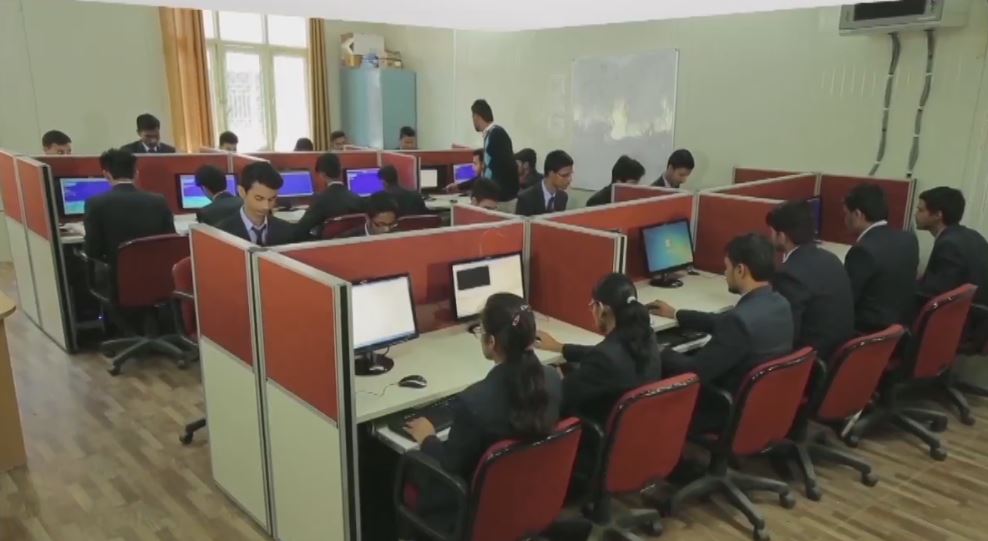Computer Science & Engineering
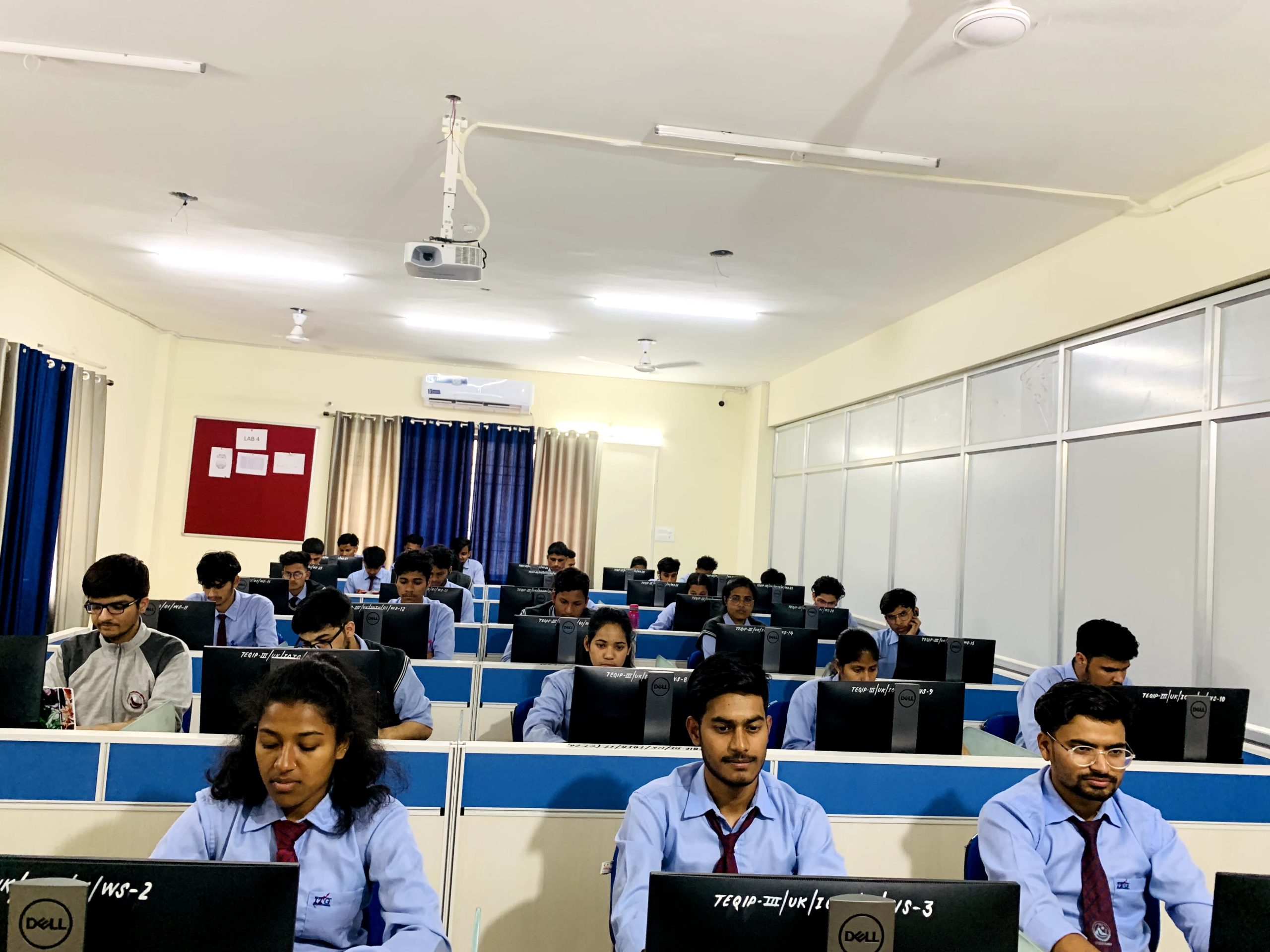
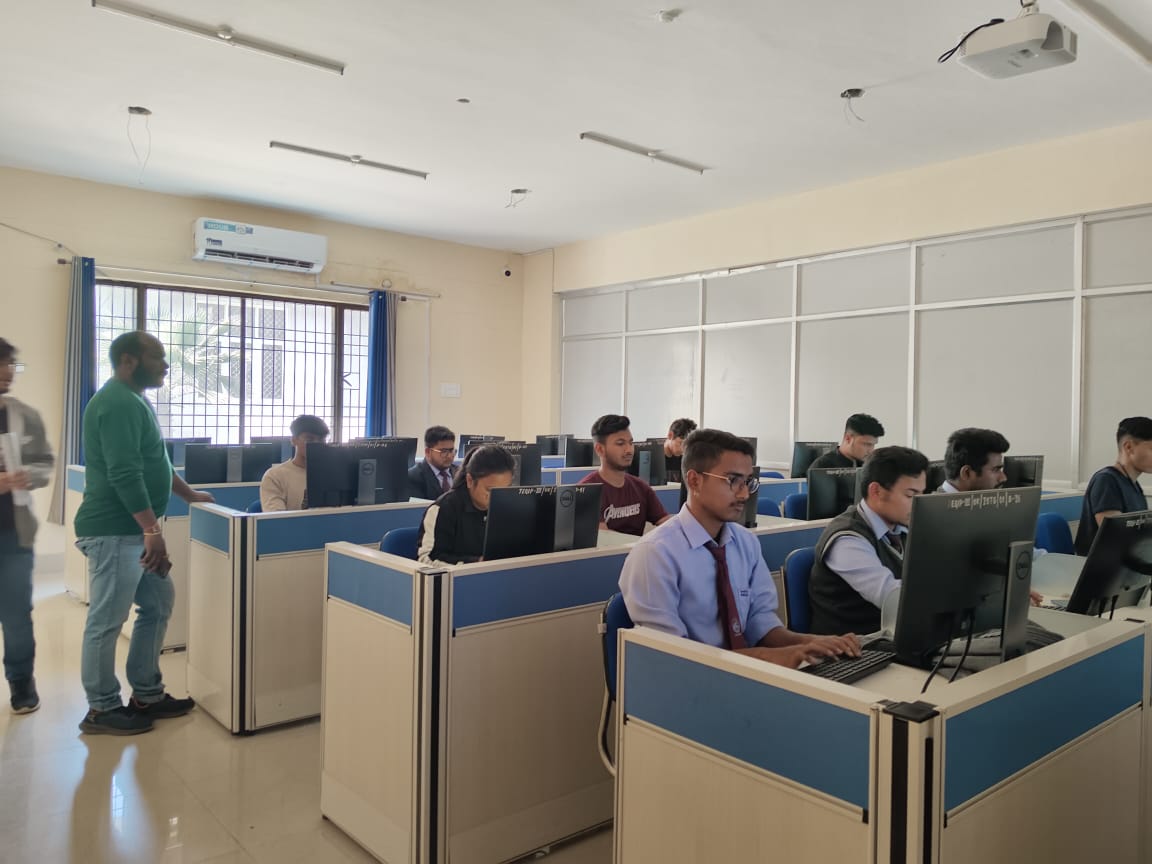


- About Department
- Courses
-
 Labs
Labs
- HoD & Faculty
- Syllabus
The core courses offered by the Department of Computer Engineering are B.Tech Degree in Computer Science and Engineering . These courses are aimed at providing theoretical and practical knowledge of Computer Science. The subjects in Bachelor’s level programme include Computer Architecture and Organisation,Automata Languages and Computation,Data Stuctures and Algorithms, Database Management Systems,Language Processor,Computer Networks,Advanced Architecture and Parallel Processing ,Software Engineering, Digital Signal Processing ,Analysis and Design of Algorithms etc.
The curriculum also includes management papers like Industrial Organization and Management. In order to bridge the gap between knowledge and its true application, students are required to undertake seminars, mini-project and main project that put them through an industry-like situation. The course produces an ideal computer engineer, well-equipped to meet the challenges of the rapidly growing IT industry.Computer Science has the power to change the world. This course offer a flexible and facinating programmes for the students who wish to acquire high skills in computers & applications, all supported by world class staff and facilities. The curriculum provides the students with a technical perspective on major issues of computer application, programming, languages and web enabled services.
Core Subjects
Being affiliated to the Uttarakhand Tachnical University, The Computer Science & Engineering department of the IT Gopeshwar follows the courses and syllabus prescribed by UTU which focus on and provide in-depth studies in the following main stream topics:.
Subject code | Subject | Semester | Year |
AHT-006 | Advanced Applied Mathematics | 3rd | 2nd |
ECT-033 | Digital Electronics | 3rd | 2nd |
AHT- 007 | Technical Communication | 3rd | 2nd |
AHT- 008 | Universal Human Value | 3rd | 2nd |
CST-002 | Discrete Structure | 3rd | 2nd |
CST-003 | Data Structures and Algorithms | 3rd | 2nd |
CST-004 | Object Oriented Programming | 3rd | 2nd |
Lab | |||
CSP-003 | Data Structures and Algorithms Lab | 3rd | 2nd |
CSP-004 | Object Oriented Programming Lab | 3rd | 2nd |
CSP-005 | Python Programming Lab | 3rd | 2nd |
CSP-006 | Internship-I/Mini Project-I* | 3rd | 2nd |
CST-005 | Python Programming | 3rd | 2nd |
CST- 006 | Cyber Security | 3rd | 2nd |
Subject code | subject | semester | year |
AHT-006 | Advanced Applied Mathematics | 4th | 2nd |
ECT-033 | Digital Electronics | 4th | 2nd |
AHT-007 | Technical Communication | 4th | 2nd |
AHT-008 | Universal Human Value | 4th | 2nd |
CST-007 | Computer Organization and Architecture | 4th | 2nd |
CST-008 | JAVA Programming | 4th | 2nd |
CST-009 | Formal Languages & Automata Theory | 4th | 2nd |
Lab | |||
CSP-007 | Computer Organization and Architecture Lab | 4th | 2nd |
CSP-008 | JAVA Programming Lab | 4th | 2nd |
CSP-009 | UNIX/LINUX Lab | 4th | 2nd |
CST-005 | Python Programming | 4th | 2nd |
CST-006 | Cyber Security | 4th | 2nd |
Subject code | subject | semester | year |
CST-010 | Design and Analysis of Algorithms | 5th | 3rd |
CST-011 | Database Management System | 5th | 3rd |
CST-012 | Compiler Design | 5th | 3rd |
CST-0XX | Departmental Elective–1 | 5th | 3rd |
CST-0XX | Departmental Elective–2 | 5th | 3rd |
Lab | |||
CSP-010 | Design and Analysis of Algorithms Lab | 5th | 3rd |
CSP-011 | Database Management System lab | 5th | 3rd |
CSP-012 | Compiler Design Lab | 5th | 3rd |
CSP-013 | Mini Project-II or Internship-II* | 5th | 3rd |
AHT-009 | Constitution of India | 5th | 3rd |
AHT-010 | Essence of Indian Traditional Knowledge | 5th | 3rd |
GP-005 | General Proficiency | 5th | 3rd |
Open Elective | |||
CST-013 | Graph Theory | 5th | 3rd |
CST-014 | Computer Graphics | 5th | 3rd |
CST-015 | Software Engineering | 5th | 3rd |
CST-016 | Queuing Theory & Modelling | 5th | 3rd |
CST-017 | Fault Tolerant Computing | 5th | 3rd |
CST-018 | Real-Time System | 5th | 3rd |
CST-019 | Distributed System | 5th | 3rd |
CST-020 | Fuzzy Logic | 5th | 3rd |
Subject code | Subject | Semester | Year |
CST-021 | Computer Networks | 6th | 3rd |
CST-022 | Artificial Intelligence | 6th | 3rd |
CST-023 | Operating System | 6th | 3rd |
CST-0XX | Departmental Elective-3 | 6th | 3rd |
AHT-0XX | Open Elective-1 | 6th | 3rd |
Lab | |||
CSP-014 | Computer Networks Lab | 6th | 3rd |
CSP-015 | Artificial Intelligence Lab | 6th | 3rd |
CSP-016 | Operating System Lab | 6th | 3rd |
AHT-009 | Constitution of India | 6th | 3rd |
AHT-010 | Essence of Indian Traditional Knowledge | 6th | 3rd |
AHT-014 | Happiness and Well-being | 6th | 3rd |
Internship-III/Mini Project-III* | 6th | 3rd | |
Open Elective | |||
CST-024 | Internet of Things | 6th | 3rd |
CST-025 | Quantum Computing | 6th | 3rd |
CST-026 | Augmented Reality | 6th | 3rd |
CST-027 | Web Technology | 6th | 3rd |
CST-028 | Reliable Computing | 6th | 3rd |
AHT-011 | Total Quality Management | 6th | 3rd |
AHT-012 | Managing E-Commerce and Digital Communication | 6th | 3rd |
AHT-013 | Industrial safety and Hazard Management | 6th | 3rd |
Subject code | subject | semester | year |
AHT-015 | Rural Development Administration and Planning | 7th | 4th |
AHT-016 | Project Management and Entrepreneurship | 7th | 4th |
CST-0XX | DepartmentalElective-4 | 7th | 4th |
CST-0XX | DepartmentalElective-5 | 7th | 4th |
CSO-0XX | Open Elective-2 | 7th | 4th |
Lab | |||
CSP-017 | Machine Learning Lab | 7th | 4th |
CSP-018 | Project Seminar | 7th | 4th |
CSP-019 | Design Project | 7th | 4th |
CSP-020 | Mini Project-III or Internship-III* | 7th | 4th |
AHT-017 | Disaster Management | 7th | 4th |
AHT-018 | Innovations and Problem Solving | 7th | 4th |
Open Elective | |||
CST-029 | Ad-hoc & Sensor Networks | 7th | 4th |
CST-029 | Machine Learning | 7th | 4th |
CST-029 | Mobile Computing | 7th | 4th |
CST-029 | Data Mining | 7th | 4th |
CST-029 | Block Chain | 7th | 4th |
CST-034 | Data Science | 7th | 4th |
CST-035 | Cryptography & Network Security | 7th | 4th |
CST-036 | DevOps | 7th | 4th |
CST-037 | Cloud Computing | 7th | 4th |
CST-038 | Natural Language Processing | 7th | 4th |
CSO-051 | Computer Network | 7th | 4th |
Subject code | subject | semester | year |
AHT-015 | Rural Development Administration and Planning | 8th | 4th |
AHT-016 | Project Management and Entrepreneurship | 8th | 4th |
CST-0XX | DepartmentalElective-6 | 8th | 4th |
CSO-0XX | OpenElective-3 | 8th | 4th |
CSO-0XX | OpenElective-4 | 8th | 4th |
Lab | |||
CSP-021 | Project | 8th | 4th |
Open Elective | |||
CST-039 | Soft Computing | 8th | 4th |
CST-040 | Software Project Management | 8th | 4th |
CST-041 | Cyber and Digital Forensics | 8th | 4th |
CST-042 | Digital Image Processing | 8th | 4th |
CST-043 | Big Data Analytics | 8th | 4th |
Labs
- C/C++ Programming Lab
- Computer Workshop (Python Programming)
- Digital Electronics Lab
- Object Oriented Programming & Methodology
- Data Structure Lab
- Software Engineering Lab
- Theory of Automata & Formal Languages Lab
- Computer Organization & Architecture Lab
- DBMS Lab
- Graphics Lab
- Networking Lab
- Advance JAVA Lab
- Visual Programming & DotNet Technologies LAB
- Compiler Design Lab
- Operating System Lab
- Artificial Intelligence Lab
- LINUX Administration Lab
- Web Technology Lab
- Projects Lab
- Turbo C/C++
- Dev C
- GCC
- Visual Studio Code
- Operating System: Windows 10, UBUNTU 15.04
- Processor: Intel Core i5
- RAM: 4GB
- HDD: 500 GB
- Display: 19″ TFT
- Powe Back Up: 15KVA Online UPS
| SN | PRACTICAL TOPIC | PROGRAM |
| 1 | DOS Commands | Practice of internal DOS commands |
| Practice of external DOS commands | ||
| 2 | Simple Arithmetic operations using various data types | Write a program (WAP) in C to convert a temperature (entered from the keyboard) from Fahrenheit to Celsius and vice versa. |
| WAP in C to swap any two numbers entered from the keyboard (with and without using third variable) | ||
| 3 | Operator | WAP in C using conditional operator to determine whether an entered year is leap year or not. |
| 4 | Decision Control Statement | WAP in C to enter the marks of any five subjects of a student and print the division secured by the students using if-else statement. |
| WAP in C to print corresponding days of a week using switch case statement. | ||
| 5 | Loop Control Statement | WAP in C to convert a decimal number to binary number and vice versa using while loop. |
| WAP in C to print the factorial of a number entered from the keyboard using do-while loop. | ||
| WAP in C to find out whether an entered number is prime or not using for loop. | ||
| 6 | Pointer | WAP in C to swap any two numbers using pointers. |
| 7 | Function | WAP in C to print Fibonacci series using function. |
| 8 | Recursion | WAP in C to print factorial of a number using recursion. |
| 9 | Array (1-D) | WAP in C to find greatest & smallest number from an array of five integers. |
| WAP in C to print the sum of elements available in an array of five floats. | ||
| WAP in C to copy all the elements from one array to another in reverse order. | ||
| 10 | Array (2-D) | WAP in C to print the addition & subtraction of the elements of any two matrices. |
| 11 | String | WAP in C to use string functions like strlen, strcpy, strcat, etc. |
| WAP in C to check whether an entered string is palindrome or not using string functions. | ||
| 12 | Structure | WAP in C to enter the title, page and price of any three books using array of structures then print the details of the books. |
| 13 | Enumeration | WAP in C to print corresponding month of an entered year using enumeration. |
| 14 | File Handling | WAP in C to print total number of characters, number of spaces, number of tabs and number of new lines written in a text file “A.TXT” |
| WAP in C to copy the contents a file “A.TXT” to another file “B.TXT” | ||
| WAP in C to modify a particular word written at nth Position in a file using fseek function. |
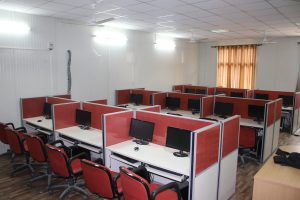
- Python
- Editor
- Visual Studio Code
- Operating System: Windows 10, UBUNTU 15.04, Red Hat
- Processor: Intel Core i5
- RAM: 4GB
- HDD: 500 GB
- Display: 19″ TFT
- Powe Back Up: 15KVA Online UPS
- Installation & working with IDE
- How to declare and use variables and operators
- Programming using Basic Libraries (Numpy, Pandas, SK Learn etc)
- To write a Python program to print HELLO INDIA.
- To write a Python program that takes in command line arguments as input and print the number of arguments.
- To write a Python program find the division of student.
- To write a program implements Fibonacci series.
- To write a Python program for factorial.
- To write a Python program to use of functions.
- To write a Python program to implement list.
- To write a Python program to implement tuples.
- To write a Python program Insertion sort.
- To write a Python program merge sort.
- To write a Python program first n prime numbers.
- Implementation of Data Science concepts using Python.

- Turbo C/C++
- Dev C
- GCC
- Visual Studio Code
- BREAD BOARDS
- TRAINER KITS
- MULTIPLEXERS
- CRO
- 8″ LED DISPLAYS
- Introduction to Digital Electronics lab- nomenclature of digital ICS.
- Implementation of the given Boolean function using logic gates in both sop and pos forms.
- Verification of state tables of RS, JK, T and D flip-flops using NAND & NOR gates.
- Implementation and verification of decoder/de-multiplexer and encoder using logic gates.
- Implementation of 4×1 multiplexer using logic gates.
- Implementation of 4-bit parallel adder using 7483 IC.
- To design and verify operation of half adder and full adder.
- To design & verify the operation of magnitude comparator.
- Design and verify the 4-bit synchronous counter.
- Design and verify the 4-bit asynchronous counter.

- JAVA
- Eclipse IDE
- Visual Studio Code
- Operating System: Windows 10, UBUNTU 15.04
- Processor: Intel Core i5
- RAM: 4GB
- HDD: 500 GB
- Display: 19″ TFT
- Power Back Up: 15KVA Online UPS
- To write a Java program to print HELLO INDIA.
- To write a java program that takes in command line arguments as input and print the number of arguments.
- To write a java program find the division of student.
- To write a program implements the concept of inheritance.
- To write a java program method overloading.
- To write a java program for method over riding.
- To write a java program exception handling.
- To write a java program to run applet for drawing various shapes.
- To write a java program to design a login using JFrame.
- To write a java program to validate the logging details of user using JDBC concept.
- .To write a Java program Insertion sort.
- .To write a Java program merge sort.
- write a Java program first n prime numbers.

- Turbo C/C++
- Dev C
- JAVA
- GCC
- Visual Studio Code
- Operating System: Windows 10, UBUNTU 15.04
- Processor: Intel Core i5
- RAM: 4GB
- HDD: 500 GB
- Display: 19″ TFT
- Powe Back Up: 15KVA Online UPS
- Implementation of Array ADT and String ADT
- Programs for Stack, Queues and Circular Queues using Arrays
- Program to convert an Infix Expression into Postfix and Postfix Evaluation
- Program to implement a Singly Linked List
- Programs to implement Stack & Queues using Linked Representation
- Programs implement Double Linked List and Circular Linked List
- Program for Polynomial Arithmetic using Linked List
- Program to implement Hashing
- Programs to implement Insertion Sort, Selection Sort, Heap Sort, and Shell Sort
- Program to implement Quick Sort and Merge Sort
- Programs to implement Tree Traversals on Binary Trees and Graphs Search Methods
- Programs to implement operations on AVL Trees and Splay Trees

- Macro Assembler
- Turbo C/C++
- Dev C
- GCC
- Visual Studio Code
- Operating System: Windows 10, UBUNTU 15.04
- Processor: Intel Core i5
- RAM: 4GB
- HDD: 500 GB
- Display: 19″ TFT
- Power Back Up: 15KVA Online UPS
- Phases in software development project, overview, need, coverage of topics
- To assign the requirement engineering tasks
- To perform the system analysis : Requirement analysis, SRS
- To perform the function oriented diagram : DFD and Structured chart
- To perform the user’s view analysis : Use case diagram
- To draw the structural view diagram : Class diagram, object diagram
- To draw the behavioral view diagram : Sequence diagram, Collaboration diagram
- To draw the behavioral view diagram : State-chart diagram, Activity diagram
- To draw the implementation view diagram: Component diagram
- To draw the environmental view diagram : Deployment diagram
- To perform various testing using the testing tool unit testing, integration testing.

- JFLAP
- Turbo C/C++
- Dev. C
- GCC
- Visual Studio Code
- Operating System: Windows 10, UBUNTU 15.04
- Processor: Intel Core i5
- RAM: 4GB
- HDD: 500 GB
- Display: 19″ TFT
- Power Back Up: 15KVA Online UPS
- Design a Program for creating machine that accepts three consecutive one.
- Design a Program for creating machine that accepts the string always ending with 101.
- Design a Program for Mode 3 Machine
- Design a program for accepting decimal number divisible by 2.
- Design a program for creating a machine which accepts string having equal no. of 1’s and 0’s.
- Design a program for creating a machine which count number of 1’s and 0’s in a given string.
- Design a Program to find 2’s complement of a given binary number.
- Design a Program which will increment the given binary number by 1.
- Design a Program to convert NDFA to DFA.
- Design a Program to create PDA machine that accept the well-formed parenthesis.
- Design a PDA to accept WCWR where w is any string and WR is reverse of that string and C is a Special symbol.
- Design a Turing machine that’s accepts the following language L = {an b n c n | where n > 0}.
- Introduction, Setup & Installation of JFLAP software/relevant software for Theory of Automata & Formal Languages.
- Create DFA to NFA and vice versa using JFLAP software/relevant software for Theory of Automata & Formal Languages.
- Convert Regular Expression into NFA using JFLAP software/relevant software for Theory of Automata & Formal Languages.

- Turbo C/C++
- Blender
- Adobe
- JAVA
- Visual Studio Code
- Operating System: Windows 10, UBUNTU 15.04
- Processor: Intel Core i5
- RAM: 4GB
- HDD: 500 GB
- Display: 19″ TFT
- Powe Back Up: 15KVA Online UPS
- Bread-board implementation of various flip-flops.
- Bread-board implementation of counters & shift registers.
- Determination of Delay time and NAND, NOR, Ex-OR, AND & OR Gates.
- Bread Board Implementation of Flip-Flops.
- Experiments with clocked Flip-Flop.
- Design of Counters.
- Bread Board implementation of counters & shift registers.
- Implementation of Arithmetic algorithms.
- Bread Board implementation of Adder/Subtractor (Half, Full)
- Transfer characteristics of TTL inverters & TTL Schmitt Trigger inverter.
- Transfer characteristics of CMOS inverters series and CD40 series and
- Estimation of Gate delay of CD40 series CMOS inverter.
- Monoshot multivibrators using 74121 and 74123.
- Clock circuit realization using 555 and CMOS inverter and quartz crystal.
- Adder/ subtractor operation using IC7483 4 bit/ 8 bit.
- Demultiplexer / Decoder operation using IC-74138.

- ORACLE 11 g
- My SQL
- Operating System: Windows 10, UBUNTU 15.04
- Processor: Intel Core i5
- RAM: 4GB
- HDD: 500 GB
- Display: 19″ TFT
- Powe Back Up: 15KVA Online UPS
- Write the queries for Data Manipulation and Data Definition Language.
- Write SQL queries using logical operations and operators.
- Write SQL query using group by function.
- Write SQL queries for group functions.
- Write SQL queries for sub queries, nested queries.
- Write program by the use of PL/SQL.
- Write SQL queries to create views.
- Write an SQL query to implement JOINS.
- Write a query for extracting data from more than one table.
- Write a query to understand the concepts for ROLL BACK, COMMIT & CHECK

- Turbo C/C++
- Blender
- Adobe
- JAVA
- Maya
- Visual Studio Code
- Operating System: Windows 10, UBUNTU 15.04
- Processor: Intel Core i5
- RAM: 4GB
- HDD: 500 GB
- Display: 19″ TFT
- Power Back Up: 15KVA Online UPS
- Implementation of line generation using slope’s method, DDA and Bresenham’s algorithms.
- Implementation of circle generation using Mid-point method and Bresenham’s algorithm.
- Implementation of ellipse generation using Mid-point method.
- Implementation of polygon filling using Flood-fill, Boundary-fill and Scan-line algorithms.
- Implementation of 2D transformation: Translation, Scaling, Rotation, Mirror Reflection and Shearing (write a menu driven program).
- Implementation of Line Clipping using Cohen-Sutherland algorithm and Bisection Method.
- Implementation of Polygon Clipping using Sutherland-Hodgeman algorithm.
- Implementation of 3D geometric transformations: Translation, Scalind and rotation.
- Implementation of Curve generation using Interpolation methods.
- Implementation of Curve generation using B-spline and Bezier curves.
- Implementation of any one of Back face removal algorithms such as Depth-Buffer algorithm, Painter’s algorithm, Warnock’s algorithm, Scanline algorithm).

- Turbo C/C++
- Dev C
- GCC
- Visual Studio Code
- Cisco Simulators
- Operating System: Windows 10, UBUNTU 15.04, REDHAT
- Processor: Intel Core i5
- RAM: 4GB
- HDD: 500 GB
- Display: 19″ TFT
- Powe Back Up: 15KVA Online UPS
- Cisco Switch
- Cisco Routers
- DLink Wifi Routers
- Implementation of the Data Link Layer framing method such as character stuffing and bit stuffing.
- Implementation of CRC algorithm.
- Implementation of a Hamming (7,4) code to limit the nois e. We have to code the 4 bit data in to 7 bit data by adding 3 parity bits.
- Implementation of LZW compression algorithm.
- Write a socket program to implement a listener and a talker.
- Simulation of a network of 3 nodes and measure the performance on the same network.
- Write a program to encrypt 64-bit text using DES algorithm.
- Simulation of various networks
- Hand on with Various Networking Devices

- JAVA 8 or above
- Dev C
- GCC
- Visual Studio Code
- Operating System: Windows 10, UBUNTU 15.04, REDHAT
- Processor: Intel Core i5
- RAM: 4GB
- HDD: 500 GB
- Display: 19″ TFT
- Powe Back Up: 15KVA Online UPS
- Cisco Switch
- Cisco Routers
- DLink Wifi Routers
-
- Development of dynamic website of an online Departmental Store. The website should be user friendly and should have the following pages:
- Home page
- Registration and user login
- User profile page
- Items catalog
- Shopping cart
- Payment by credit card
- Order confirmation
- Add validations to the above site for registration, user login, user profile and payment by credit card using Java Script.
- Do the assignment using JSP by converting the static web pages of assignment into dynamic web pages. Create database with User Information and Item information. The Item catalog should be dynamically loaded from the database.
- Implementation of currency converter program using JSP Struts Framework

- Visual Studio
- MS SQL
- Operating System: Windows 10, UBUNTU 15.04, REDHAT
- Processor: Intel Core i5
- RAM: 4GB
- HDD: 500 GB
- Display: 19″ TFT
- Power Back Up: 15KVA Online UPS
- Bread-board implementation of various flip-flops.
- Bread-board implementation of counters & shift registers.
- Determination of Delay time and NAND, NOR, Ex-OR, AND & OR Gates.
- Bread Board Implementation of Flip-Flops.
- Experiments with clocked Flip-Flop.
- Design of Counters.
- Bread Board implementation of counters & shift registers.
- Implementation of Arithmetic algorithms.
- Bread Board implementation of Adder/Subtract or (Half, Full)
- Transfer characteristics of TTL inverters & TTL Schmitt Trigger inverter.
- Transfer characteristics of CMOS inverters series and CD40 series and
- Estimation of Gate delay of CD40 series CMOS inverter.
- Moonshot multivibrators using 74121 and 74123.
- Clock circuit realization using 555 and CMOS inverter and quartz crystal.
- Adder/ subtract or operation using IC7483 4 bit/ 8 bit.
- DE multiplexer / Decoder operation using IC-74138.

- Turbo C/C++
- Dev C
- GCC
- Lex
- Yacc
- JFlex
- CUP
- Operating System: Windows 10, UBUNTU 15.04
- Processor: Intel Core i5
- RAM: 4GB
- HDD: 500 GB
- Display: 19″ TFT
- Powe Back Up: 15KVA Online UPS
-
- Simulation of a Finite state Automata to recognize the tokens of various control statements.
- Simulation of a Finite state machine to distinguish among Integers, Real Numbers & Numbers with Exponents.
- Program in LEX tool to recognize the tokens and to return the token found for a C like Language
- Parsing of arithmetic and algebraic expressions and equations.
- Use of YACC tool to parse the statements of C like Language.

This lab includes Operating System, Unix Programming, and System and Unix Programming Lab
The objectives of this lab is :
List of Softwares and Hardware Softwares:– To familiarize students with the architecture of Unix OS.
– To provide necessary skills for developing and debugging programs in UNIX environment.
- Turbo C/C++
- Dev C
- GCC
- Visual Studio Code
- Operating System: Windows 10, UBUNTU 15.04
- Processor: Intel Core i5
- RAM: 4GB
- HDD: 500 GB
- Display: 19″ TFT
- Powe Back Up: 15KVA Online UPS
- Simulation of the CPU scheduling algorithms a) Round Robin b) SJF c) FCFS d) Priority
- Simulation of MUTEX and SEMAPHORES.
- Simulation of Bankers Deadlock Avoidance and Prevention algorithms.
- Implementation of Process Synchronization (Reader-Writer, Sleeping Barber and Dining Philosopher’s Problem)
- Simulation of page Replacement Algorithms a) FIFO b) LRU c) LFU
- Simulation of paging techniques of memory management.
- Simulation of file allocation Strategies a) Sequential b) Indexed c) Linked
- Simulation of file organization techniques a) Single Level Directory b) Two Level c) Hierarchical d) DAG

- PROLOG
- LISP
- Scilib
- Visual Studio Code
- Operating System: Windows 10, UBUNTU 15.04
- Processor: Intel Core i5
- RAM: 4GB
- HDD: 500 GB
- Display: 19″ TFT
- Powe Back Up: 15KVA Online UPS
- Write a LISP Program to solve the water-jug problem using the heuristic function.
- Create a compound object using Turbo Prolog.
- Write a Prolog Program to show the advantage and disadvantage of green and red cuts.
- Write a prolog program to use of BEST-FIRST SEARCH applied to the eight puzzle problem.
- Implementation of the problem-solving strategies: Forward Chaining, Backward Chaining, Problem Reduction.
- Write a Lisp Program to implement the STEEPEST-ASCENT HILL CLIMBING.
- Write a Prolog Program to implement COUNTY PROPAGATION NETWORK.

ABOUT
The students receive hands-on practical experience in the field of System Administration, System Engineering, Hacking, and Security. Red Hat Linux Administration is the key practice in this lab.
List of Softwares and Hardware
Softwares:
- Turbo C/C++
- Dev C
- GCC
- JAVA
- Visual Studio Code
Hardware:
The lab includes 35 systems with following configurations:
- Operating System: Windows 10, UBUNTU 15.04,RED-HAT
- Processor: Intel Core i5
- RAM: 4GB
- HDD: 500 GB
- Display: 19″ TFT
- Powe Back Up: 15KVA Online UPS
LIST OF PRACTICAL
- Installation of the operating system (Window 7 and LINUX)
- Installation of office productivity software (MS Office/ Open Office)
- User Management
- Security Management
- Startup & Shutdown scripts
- Network planning – subnet creation
- Firewall configuration
- Basic properties of Windows Registry
- Study of Important Windows Services
- Study of Important LINUX Services
- Turbo C/C++
- Ruby
- GITHUB
- Dev C
- GCC
- JAVA
- Visual Studio Code
- Operating System: Windows 10, UBUNTU 15.04
- Processor: Intel Core i5
- RAM: 4GB
- HDD: 500 GB
- Display: 19″ TFT
- Powe Back Up: 15KVA Online UPS
- Installation and configuration of Apache server
- Development of static website of an online Departmental The website should be user friendly and should have the following pages:
- Home page
- Registration and user login
- User profile page
- Items catalog
- Shopping cart
- Payment by credit card
- Order confirmation
- Add validations to the above site for registration, user login, user profile and payment by credit card using Java Script.
- Installation and configuration of TOMCAT web server. Convert the static web pages of assignments 2 into dynamic web pages using servlets and cookies.
- Creation of a XML document of 20 students of UKTech. Add their roll numbers, marks obtained in 5 subjects, total and percentage and save this XML document at the server. Write a program that takes students’ roll number as an input and returns the students marks, total and percentage by taking the students’ information from the XML document.
- Design a website using existing web services (Google map, weather forecast, market information etc.) using AJAX.

- Turbo C/C++
- Dev C
- GCC
- JAVA
- Visual Studio Code
- GITHUB
- ECLIPSE IDE
- Andriod IDE
- X WAMP
- Operating System: Windows 10, UBUNTU 15.04
- Processor: Intel Core i5
- RAM: 4GB
- HDD: 500 GB
- Display: 19″ TFT
- Powe Back Up: 15KVA Online UPS

HOD & Faculty
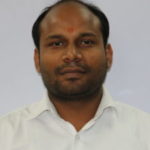
Varun Prabhakar
varun.prabhakar@itgopeshwar.ac.in
M.No.: 9536003979
M.Tech(GGSIPU,Delhi)
Designation: HOD, Assistant Professor

Yashvi Chandola
yashvi@itgopeshwar.ac.in
M.No.:9458167493
M. Tech (GBPIET, Pauri)
Designation: Assistant Professor
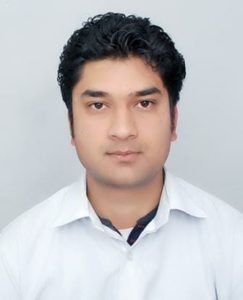
Vivek Uniyal
vivek.uniyal@itgopeshwar.ac.in
M.No.: 9719014630
M. Tech (GEU, Dehradun)
Designation: Assistant Professor
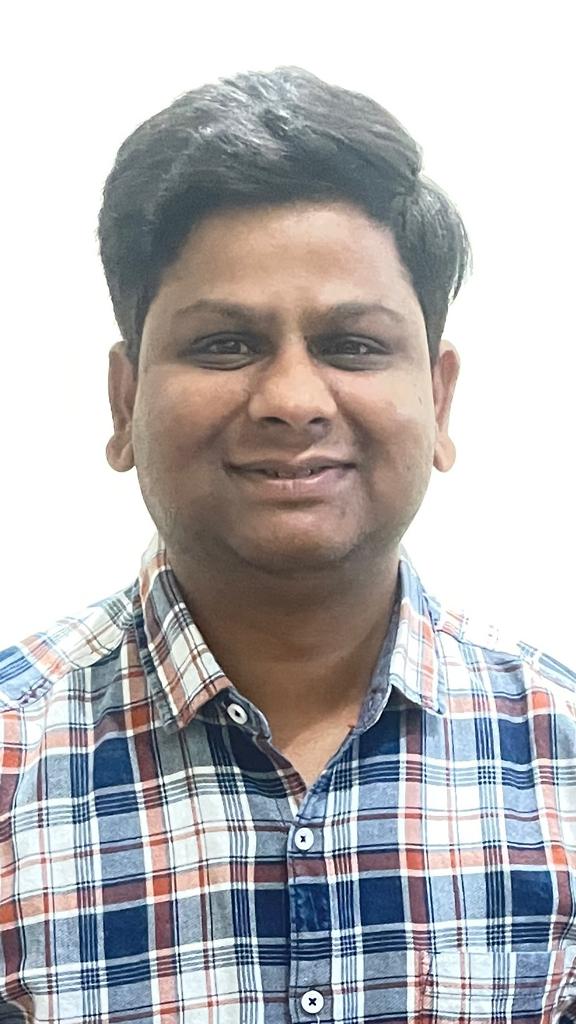
Pradeep Chandra
pardeep.chandra@gmail.com
M.No.: 9411517596
M. Tech (Graphic Era Hill University)
Designation: Assistant Professor
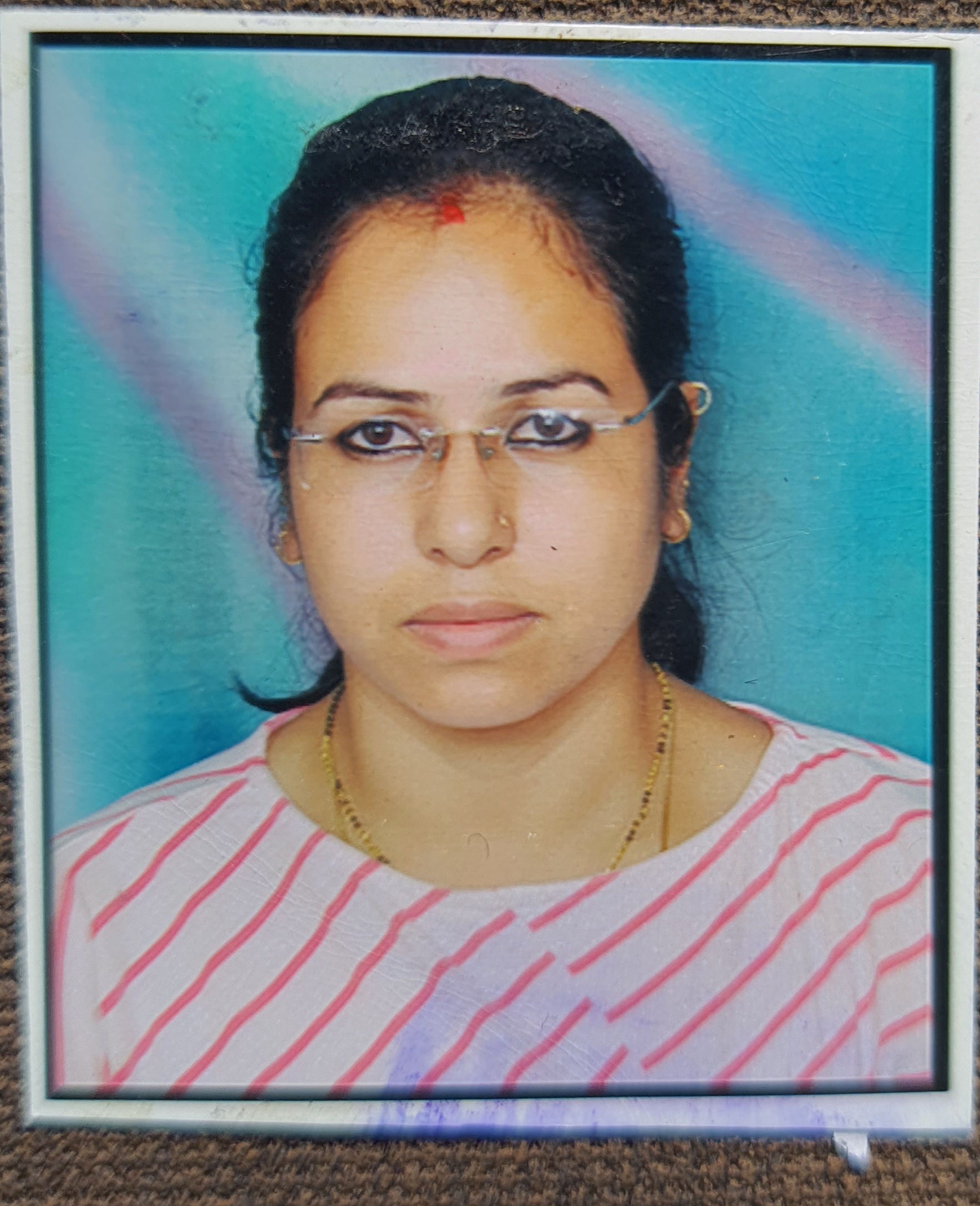
Monika Bartwal
monikakandwal23@gmail.com
M.No.: 8936999536
M. Tech (BTKIT Dwarahat)
Designation: Assistant Professor

Ravindra Rawat
rawatr907@gmail.com
M.No.: 8979621652, 8279336161
M. Tech (Hemvati Nandan Bahuguna Garhwal (Central) University)
Designation: Assistant Professor
Click here for syllabus

